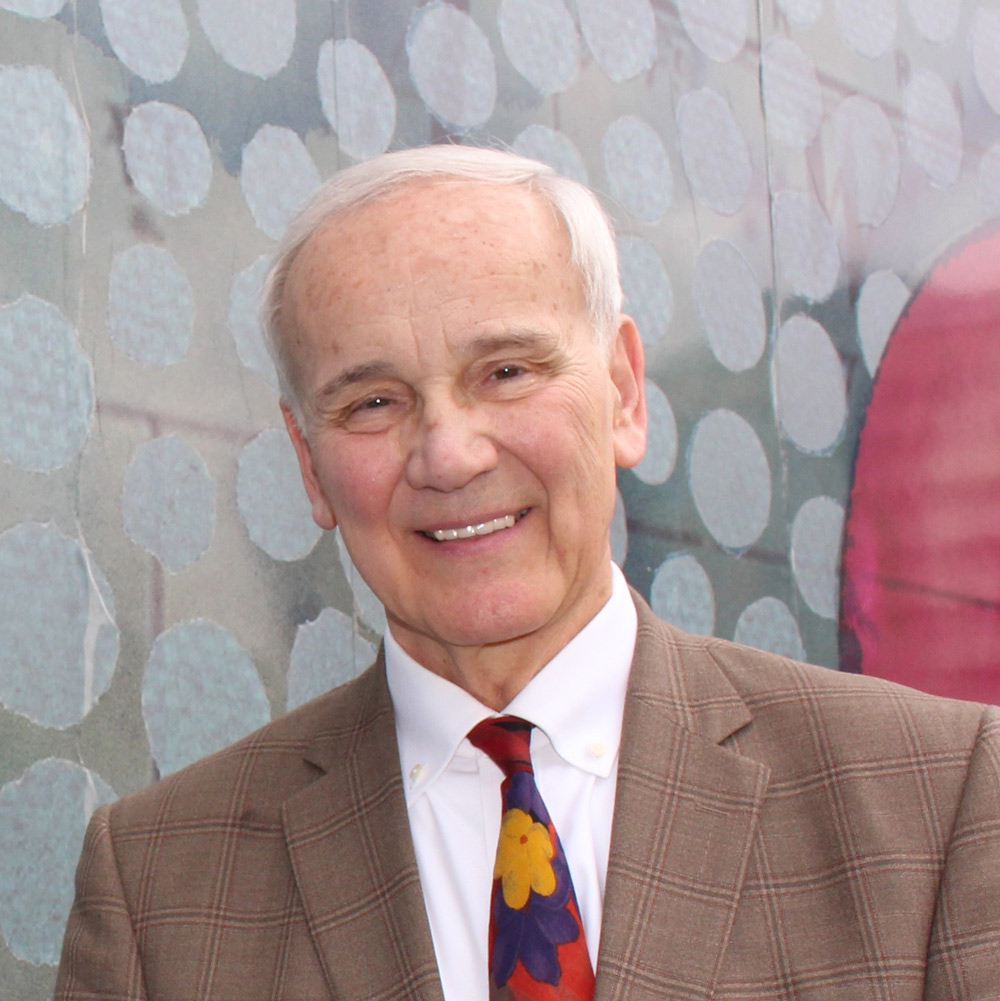Church art, architecture ‘shape the way we worship God’

Fr Richard Vosko. Photo supplied.
One of the world’s most prolific designers of places of worship has said people can’t create a “sacred space”, but spaces become sacred when they foster transformation.
Fr Richard Vosko, an American priest and architectural consultant on Catholic, Christian and Jewish places of worship since the 1970s, delivered a keynote address at last week’s National Liturgical Architecture and Art Council symposium, “Where Your Heart Is, There Your Treasure Will Be Also”.
In an interview with the Australian Catholic Bishops Conference, Fr Vosko said language is important when it comes to helping people understand liturgy, art and architecture.
“I think the adjective ‘sacred’ – sacred space, sacred music, sacred liturgy, sacred people – is overused,” he said.
“For something, or someone, to obtain that title ‘sacred’, he, she or it has to cause a transformation in the person experiencing he, she or it. You cannot actually build a sacred space, but you can design a building with the hope that it will lead someone to that kind of transformation or conversion.”
Fr Vosko said many Catholics have, for ages, embraced a “vertical” notion of the Church: God at the top, the faithful below that and non-believers at the bottom of the hierarchical structure – often considered to be Hell.
“This dualistic language was based on an ancient understanding of the cosmos — heaven above, earth below and the underworld even farther below,” he said.
That concept, when used to build churches, created another tiered system.
“We have the clergy presiding at the top end of the church, that symbolised heaven, then there are the people below in the pews, and then there are those who aren’t in the pews, those outside, those separated from God,” Fr Vosko said.
He said that understanding can lead to the sense that some people are more important than others during the Eucharist. The laity come to Mass “to receive something from the priest”, rather than recognise their membership in the body of Christ during the act of worship.
“The liturgy is the work of Jesus Christ, but it is also the work of the people,” Fr Vosko explained.
“The Second Vatican Council’s Constitution on the Sacred Liturgy taught us that in ‘the liturgy, the whole public worship is performed by the Mystical Body of Jesus Christ, that is, by the Head and His members’.”
In order for this teaching to be manifested in church architecture the interior design of the church is crucial, he said. In his experience, working on dozens of projects, across many denominations and faiths, Fr Vosko urged that the location of the priest or worship leader be among the people.
“We need to re-emphasise the ‘theology of the assembly’,” he said, acknowledging that some of the architectural changes to churches in the years after Vatican II didn’t achieve that – for a number of reasons.
“We really want people to understand, ‘You are the Body of Christ’, as St Paul wrote. One way to do that in eucharistic assemblies is to give that sense that all people are gathered around the altar table.”
Fr Vosko said many churches of different architectural styles from different periods of history have great theological, liturgical and aesthetic value, which should be preserved and enhanced, where possible.
But if other features, for example those that divide worshipers into sections in the church building, are actually hindering the worship of God – “the reason we build churches in the first place” – then they should be re-ordered.
In one analysis of various physical parts of a Catholic church, Fr Vosko said the attempt to create spaces conducive to good liturgy starts at the front door of the building.
“The doors into a church should be special; they should provide an experience of passing through a sheepgate,” he said, referencing the scriptural imagery of Jesus as a sheepgate in John’s Gospel.
“You shouldn’t feel like you’re walking into a supermarket.”
Fr Vosko reminded symposium delegates of the need to consider the liturgical and theological symbolism of other features in churches, including baptismal fonts, the ambo, the altar, iconography and stained-glass windows, when designing or redesigning them.
“Every facet of church art and architecture shapes the way we worship God,” he said.
Source: ACBC Media Blog.



I’m not familiar with this architect’s work, so I will only discuss his words. I have been in many modern churches that emphasise gathering around the table, and I am always underwhelmed. I agree with his characterisation of them as having entrances (narthaxes?) like “supermarkets “, and would extend that descriptor to the building as a whole. The buildings may be consecrated to the glory of God, but they all too often fail to lift the heart towards God, to “cause transformation “, as the good father proposes.
I cannot but contrast this to the fairly humble country church that I attended with my family while on holidays a few weeks ago. It was built in the 1890s, and aside from having beautiful stained glass, the ornamentation was standard catalogue ware of the era. That said, the children were amazed at its beauty. It did lift the mind towards God who is, dare I say it, above us, however deficient the cosmology of our ancestors.
I concede that it must be possible to build an equally beautiful church “in the round”; Quakers have a history of this., and Father may even achieve it. I am unconvinced that we should, however. Our age has no lack of self regard, and any correction should be towards God, rather than towards ourselves. Of course, if we are tempted to self-congratulations regarding those who are outside the Church, that is an issue; but this is not the besetting sin of our age. God is God, and we are not: this is essential to true worship, and must not be lost, in our architecture or anywhere else.